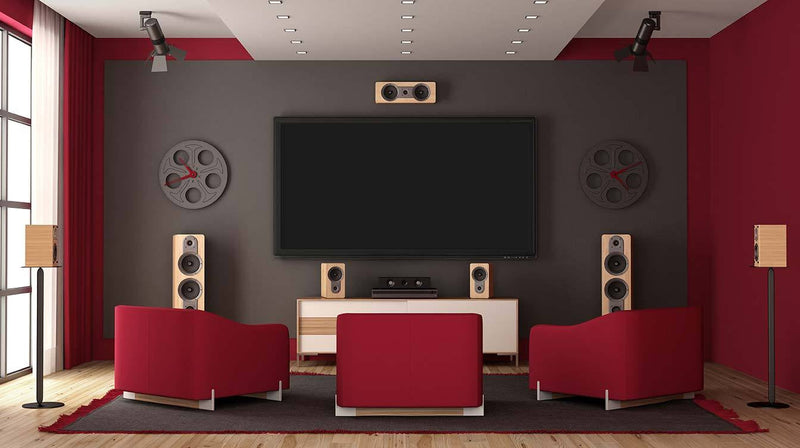TV Mounting Made Easy: How to Mount a Flat Screen Television On Any Wall

Whether you are trying to save room in your small space or are looking for a cleaner, more modern look than a bulky entertainment system, you might be thinking about mounting your television to the wall. All you need are two people, a quality mount, an electric drill, the right wall anchors for long lasting support, and of course, a flat screen TV.
Ready to upgrade your space? Follow these simple steps for mounting a flat screen TV to any wall.
Pick your space
First things first, you must choose a spot on the wall where you’ll want to mount the TV. Don’t fret if you think your wall isn’t suitable for a heavy TV. You’ll be able to hang your TV in hollow walls with metal or wooden studs, and concrete, brick, or stone walls.
Select a wall mount and the correct wall anchors
Be sure to choose a wall mount that works with your television, supports the entire weight, and can be used with the type of wall you’re mounting on to. This information can be found on the packaging or product description of whichever mount you choose.
Make marks on your wall where you’ll need to drill holes for the anchors and screws. Follow the holes on the mount as a guide, but be sure to use a leveling tool to ensure everything is straight. In hollow walls, aim to have the holes in a solid stud.
Next, the anchors are important for an optimal strength hold and will minimize any damage to your wall (or your precious TV, that otherwise might come unmounted!).
If you’re mounting onto drywall or another hollow material like concrete block, use the SNAPTOGGLE® Heavy Duty Toggle Bolts. They can be installed directly into a stud or where a stud isn’t available. This heavy duty drywall anchor is the strongest of its kind, and up to 2x as strong as those “old-fashioned” wing toggles. It can hold up to 356 pounds in ⅝” drywall, which should support just about any TV you want to mount.
If you’re mounting onto a solid wall such as concrete or brick, use ALLIGATOR® All-Purpose Anchors. In concrete, these heavy duty anchors can hold up to 1,025 pounds… much heavier than any flat screen you’ll be hanging up.
How to mount a TV using SNAPTOGGLE
- Drill ½” holes where you originally marked based on the mount.
- Hold metal channel flat alongside plastic straps and slide channel through the hold. Note that the minimum clearance behind the wall is 1 ⅞”.
- Hold ends of straps together between your thumb and forefinger, and pull toward you until the channel rests behind the wall. Slide the cap along the straps with your other hand until the flange is flush with the wall.
- Place thumb between straps at wall. Push thumb side to side, snapping off straps level with flange of cap.
- Place the mount over flange. Insert bolt and tighten until snug against item, then stop. Use machine screw or bolt to match thread in metal channel. Repeat until the mount is securely attached.
- Note the specific instructions on the mount about how to hook the television up. This is where you’re going to need another set of hands to minimize the chance of any damage or injury.
How to mount a TV using ALLIGATOR
- Drill 5/16” holes where you originally marked based on the mount. The minimum hole depth is 2”.
- Insert the ALLIGATOR anchor into the hole and tap flush to wall using a hammer. Repeat for each hole that you’ve drilled.
- Place the mount over the anchors. Using a screw gun, insert an appropriately sized lag screw into each anchor until the head is flush with the surface of the mount. Do not overinstall.
- Note the specific instructions on the mount about how to hook the television up. This is where you’re going to need another set of hands to minimize the chance of any damage or injury.
Enjoy your upgraded living space!
You won’t have to worry about your newly mounted television when you use a high performance anchor like TOGGLER brand. If you used the SNAPTOGGLE anchor and happen to replace the television and/or mount, you won’t need to reinstall the anchor. Just unscrew the mount and place any new screws into the same anchor, without losing out on any holding power.